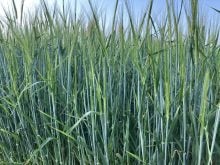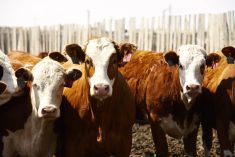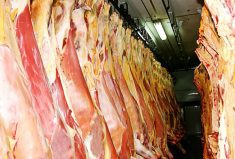Common market talk regarding the cattle market has to do with cattle inventories and beef production. We all hear about how the calf crop is at historically low levels and the cow herd is shrinking, and yet prices fail to make fresh highs. The reason, which most coffee shop analysts fail to look at, is demand.
Statistics Canada and the USDA do an excellent job of counting cattle but demand is the hardest part of the price equation to forecast. Even when beef production is shrinking, a commodity is only worth what someone is willing to pay for it.
Read Also

Finding greater value through controlled creep feeding of beef calves
Gerard Roney, founder of Advantage Feeders in Australia, spoke at Ag in Motion 2025 about using controlled creep feeding to develop a calf’s rumen, allowing for better uptake of energy and protein at a younger age, along with other beneficial applications of creep feeding.
The cattle market is unique in that beef is considered a semi-staple food item. There are products such as ground beef and certain cuts that are consumed regularly by the average North American consumer but a $20-per-pound beef tenderloin is only bought by people in a select income range. In lower-income parts of a city, high-quality cuts are either ground up after a certain amount of time in an effort to move product off the shelf or carried in very limited quantities. Similarly, higher-end restaurants serving quality beef products tend to be visited by a select group of consumers.
Growing up on the farm, I ate all types of beef regularly but it was only after studying the beef market that I realized my diet was that of a high-income individual living in the city. I was actually forced to eat excellent-quality steaks because as a teenager I preferred hamburgers. I think most farm children can relate. We all have our preferences yet we don’t realize how fortunate we were compared to school kids living in the city.
I’ve discussed beef demand in previous issues but I felt this would be a good time to revisit the subject and provide an idea of how consumption patterns will develop over the next year. This will ultimately dictate the price of fed cattle and influence values of the feeder market.
Beef demand is highly correlated with income levels of the average North American consumer. This is the largest factor influencing beef consumption. Looking at recent statistics, the U.S. unemployment rate has dropped to a five-year low of seven per cent, which is a positive signal. U.S. third-quarter GDP was reported at 3.6 per cent from July through September and fourth-quarter GDP should also reach three per cent. This is important because two-thirds of GDP is related to consumer spending and a one per cent increase in consumer spending equates to nearly one per cent increase in beef demand.
Looking forward, first- and second-quarter GDP for 2014 is projected at 2.5 per cent. This is largely due to a slowdown in spending in January and February. In March, consumers generally start to increase consumption through holidays such as spring break and generally eat out more when the weather turns warmer. This is particularly important for full-service restaurant spending as there is a very strong seasonal tendency for spending to increase in March.
I’ve attached a chart of U.S Full Service Restaurant Spending to September 2013 (see January 2014 print edition). A chart of U.S. grocery store spending would look very similar except the amount spent would be twice as much. Notice the increase in December and then the sharp drop in January and February. Spending increases in March and then slowly starts to decline into the fall period most years. Away from home food spending in September was up 2.9 per cent over 2012 and October was up a meagre 1.3 per cent over last year. If GDP is projected to rise by 2.5 per cent in the first and second quarter of 2014, we can project that U.S. full service restaurant spending will increase by 1.8 per cent since consumer spending is 70 per cent of GDP in most quarters.
Another factor to consider is the substitute meats of pork and poultry. It takes about one year to increase poultry production and 1.8 years to increase pork production but a solid three years to increase beef production. U.S. poultry production will reach record levels in 2013 and again in 2014. Poultry is the cheapest source of protein in the U.S. and the income-constrained consumer will choose poultry over beef, if price is the only factor.
At the time of writing this article, fed cattle in Alberta were trading at $126 per cwt while December live cattle futures were at $132. April futures were at $134 and June was at $129. Without taking into account the Canadian dollar, the market is factoring in the strong demand in late March and April but slower demand in June. Keep in mind beef production also increases in the second quarter. Depending on the weight of feeder cattle, the price of replacements are fed-cattle values in the deferred positions such as five to eight months forward.
One can draw many conclusions from all this. For example, if feeder cattle prices are historically high in March due to current strength in fed cattle, don’t expect the feeders to hold up but rather come under pressure because beef demand will decrease into the summer. Using the GDP projections and looking at the seasonal patterns in beef demand, cattle producers can have a better idea of their hedging strategies or marketing program.
Gerald Klassen analyses markets in Winnipeg and also maintains an interest in the family feedlot in southern Alberta. He can be reached at [email protected].















